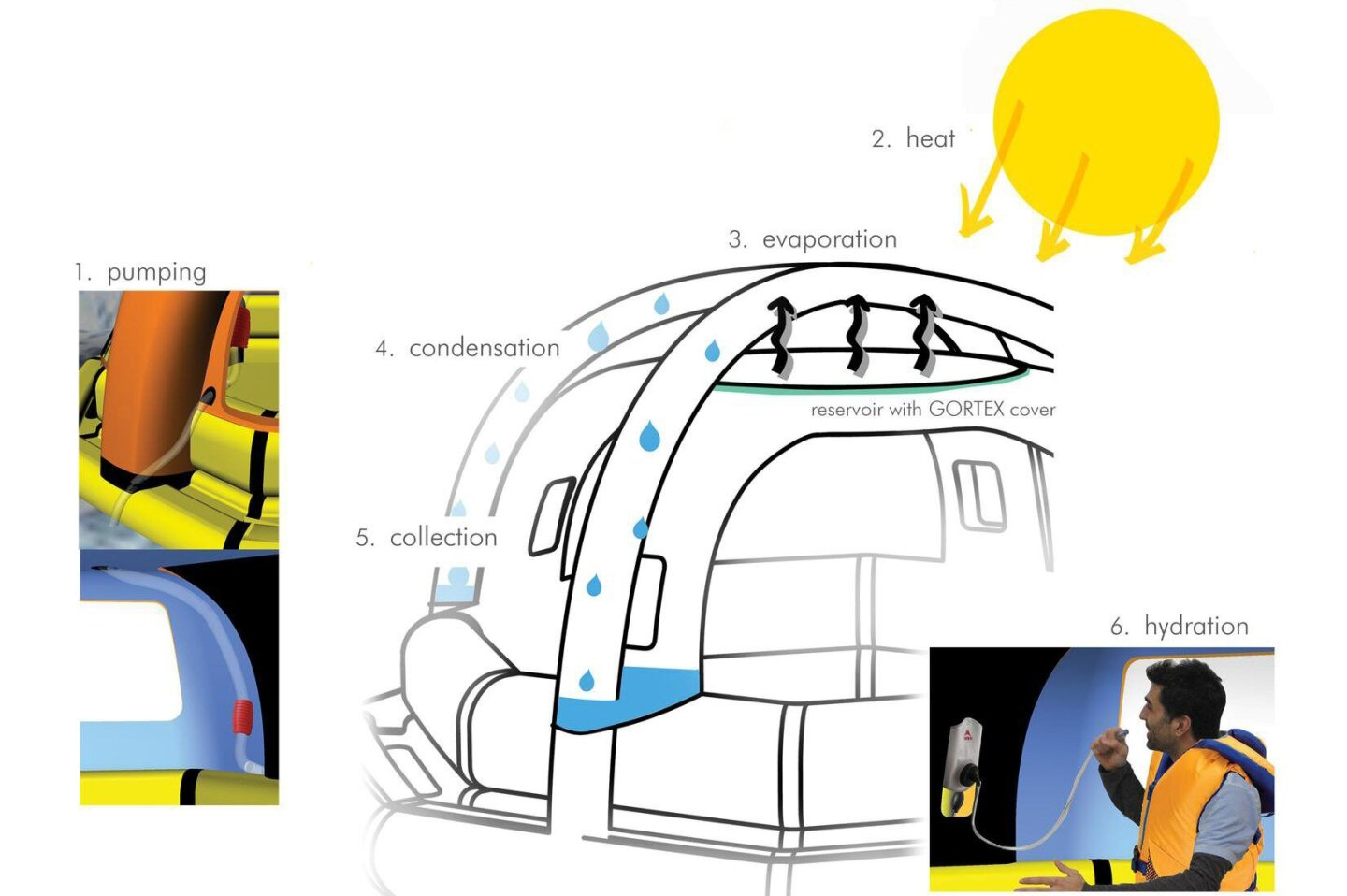The thought of folks suffering from extreme dehydration whilst stranded in a life raft at sea got industrial designer Kim Hoffman thinking of a way to turn all that sea water into safe, drinkable, life-saving refreshment. She took inspiration from portable desalination tools and created the Sea Kettle concept, a colorful life raft that uses heat from the sun to evaporate salty water and collect condensed run off in containers within the raft's structure.
According to Hoffman, a product design graduate of San Francisco's Academy of Art University, the Sea Kettle "is a life raft that combines safety, accessibility, and a desalination process. In an emergency at sea, you may not be able to obtain fresh drinking water before being forced to abandon ship. Passengers could easily die of thirst or from extreme temperatures before they are rescued or reach land."
As well as providing both insulation and shelter from the elements, the Sea Kettle would feature a number of hand pumps within the cabin. With these, the lucky survivors would draw up sea water into a Gortex covered plastic reservoir. Both the reservoir and the cover would be black to help concentrate the sun's heat onto the water contained therein.

As the evaporated water hits the top of the cover, vapor escapes through the Gortex but the larger water molecules are condensed and the droplets run into four pockets around the raft, filling them up with drinkable water. Hoffman states that the process should provide enough drinking water for up to five people.
The designer says that the desalination process used in the Sea Kettle design was inspired by the Watercone, a portable solar still where salty/brackish water is poured into the base and the cone floated on top. The black pan base helps cater for the evaporation of the water, which condenses to form droplets on the inside of the cone. The droplets trickle down into a trough. A cap at the tip of the cone is unscrewed and the cone turned upside down to pour the drinking water into a suitable container.

Hoffman has entered her design in this year's James Dyson Award competition and will know shortly whether it's made it through to the next round, the first shortlist being announced on August 3. The overall winner will be crowned in October and will walk away with GBP10,000 (approx. US$15,682), a visit to one of the Dyson R&D centers and the Award trophy. If appropriate, the University Department to which the winning designer or team belongs will also receive GBP10,000.
Of course the whole life-saving process sort of depends on a Sea Kettle ending up in a location where there's sufficient heat to evaporate the collected sea water. Rafters may still find themselves a bit parched if their Sea Kettle bobs around in stormy, bitter cold Titanic-type situations. That said, marine accidents are not just restricted to icy northern waters and I would rather take my chances in a Sea Kettle than one without built-in solar desalination.









